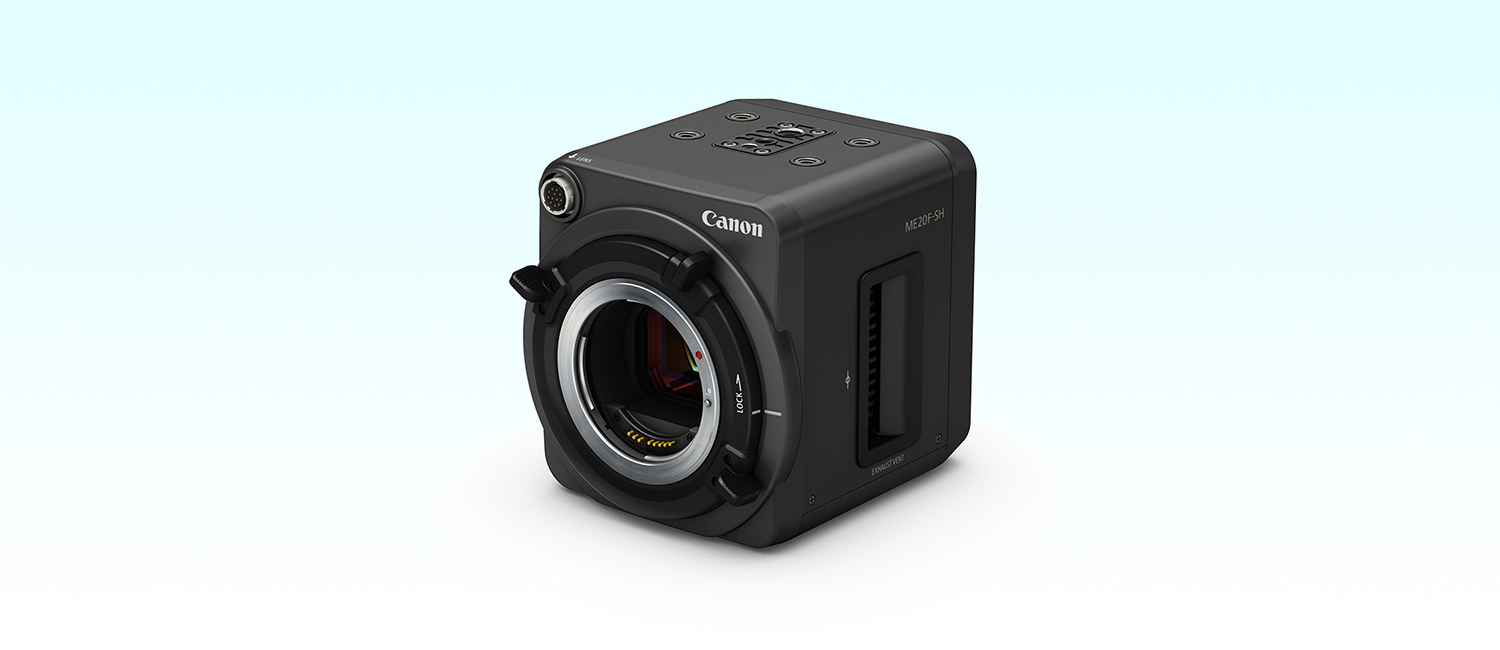

Canon’s proprietary ultra-high-sensitivity multi-purpose camera makes possible video capture once considered challenging for a wide range of applications, from disaster and crime prevention to video production.
2018/12/27Featured Technology
The ME20F-SH is a multi-purpose camera that utilizes an image sensor and image processing platform developed by Canon to achieve a minimum subject illumination of 0.0005 lux1 or less2, the highest sensitivity in the industry3. Even in dark places where it is difficult to discern subjects with the naked eye, this camera can make it look like images were captured in broad daylight. The camera is used for such applications as nighttime surveillance, natural-disaster confirmation and wildlife-related biological research.
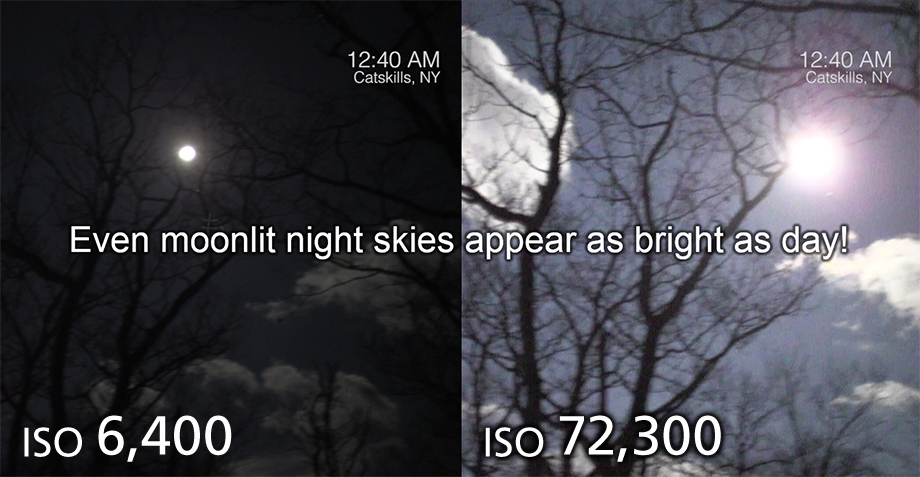
Actual Image
#Industrial equipment technologies#Imaging technologies#Electrical engineering#Physics#Chemistry#Semiconductors
The key to achieving higher camera sensitivity is increasing how much light you can capture. Because increasing the size of the image sensor leads to improved sensitivity, the ME20F-SH uses a 35 mm full-frame CMOS sensor. In addition, to increase the sensitivity even more, each sensor pixel is designed to be able to capture as much light as possible. In general, increasing either the sensitivity or the resolution requires a trade off. If the number of pixels is increased to increase the resolution, the pixel area also decreases, which reduces the sensitivity. Conversely, if the pixel area is increased to increase the sensitivity, the number of pixels decreases, which reduces the resolution.
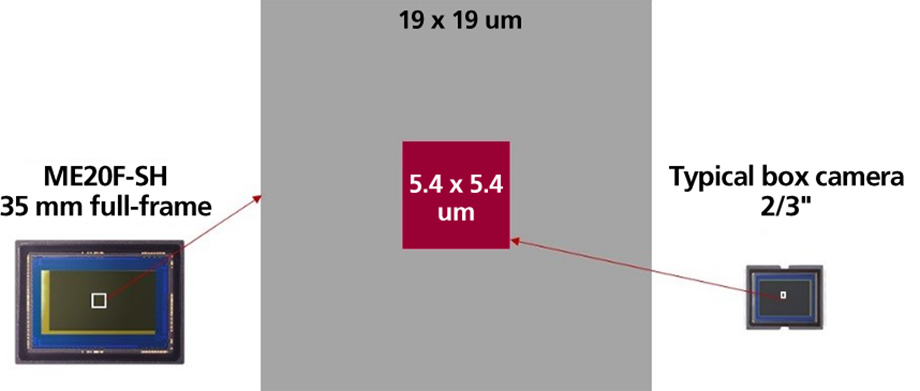
Area of Each Pixel Compared with a Typical Box Camera
For the ME20F-SH, a balance of both has been considered, and the camera uses a resolution of 1,920 x 1,080 ideal for HD video recording as well as a large pixel size of 19 x 19 micrometers4. In addition, to ensure that the light that reaches each pixel can be converted to electricity without any waste, microlenses are positioned over the pixels to deliver as much light as possible to the photodiodes.
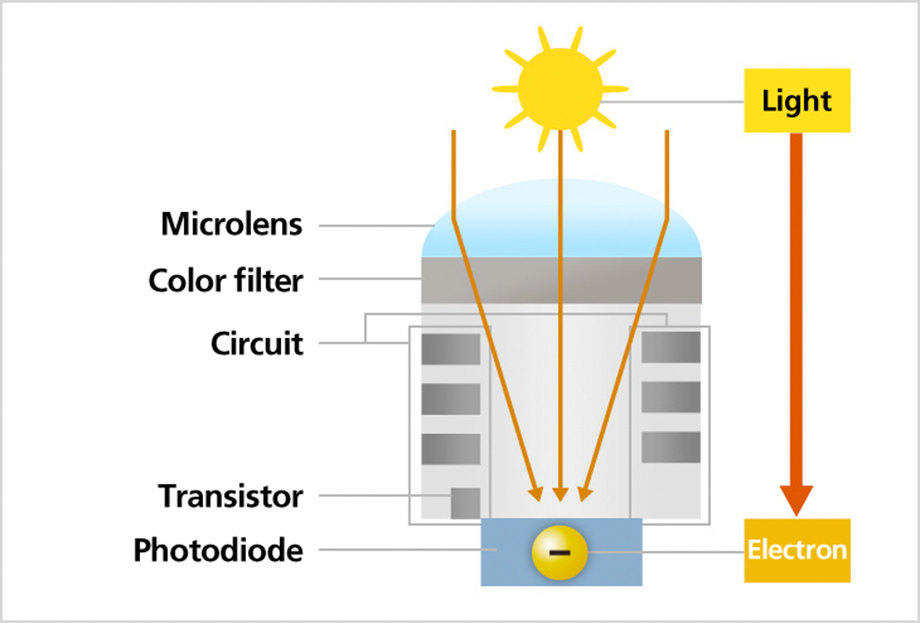
Internal Structure of a Pixel
However, making the pixels larger also causes a problem: after a photodiode converts light to electricity, it takes a lot longer to reach the readout circuit. To make the electricity flow more smoothly and ensure that information can be efficiently read, even with large pixels, Canon designed a new multi-stage potential structure within each pixel and optimized such characteristics of its slope structure as the number of stages, shape and angle.
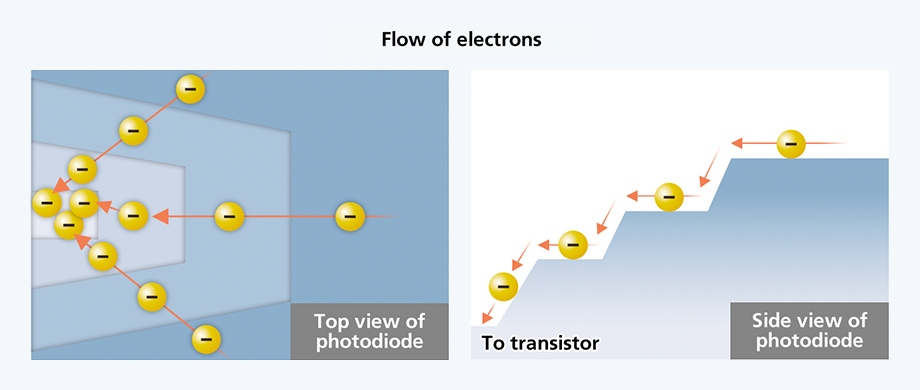

Multi-Stage Potential Structure Used in Each Photodiode
#Industrial equipment technologies#Imaging technologies#Electrical engineering#Computer science
Canon's on-chip noise elimination technology eliminates fixed-pattern noise. The company's pixel-internal full-charge transfer technology also reduces random noise.
The higher the signal processing speed, the greater the random noise. To resolve this problem, Canon's CMOS incorporates a proprietary technology that performs amplification according to the specified sensitivity before reading a signal and then sends signals that have a high S/N ratio to a high-speed amplifier. Unlike other methods, for which high-speed amplification processing causes more random noise, Canon's low-noise sensor can stand up to the demands of high-sensitivity settings and long exposure.

Types of Noise
#Industrial equipment technologies#Imaging technologies#Electrical engineering#Computer science
Fixed-pattern noise occurs as a result of such factors as pixel-amplifier variation. This type of noise always occurs at the same pixels even when shooting at different times. Canon's on-chip noise elimination technology makes it possible to almost completely eliminate fixed-pattern noise by first reading only the noise information in each light signal followed by the signal that includes the light itself and then subtracting the former from the latter.
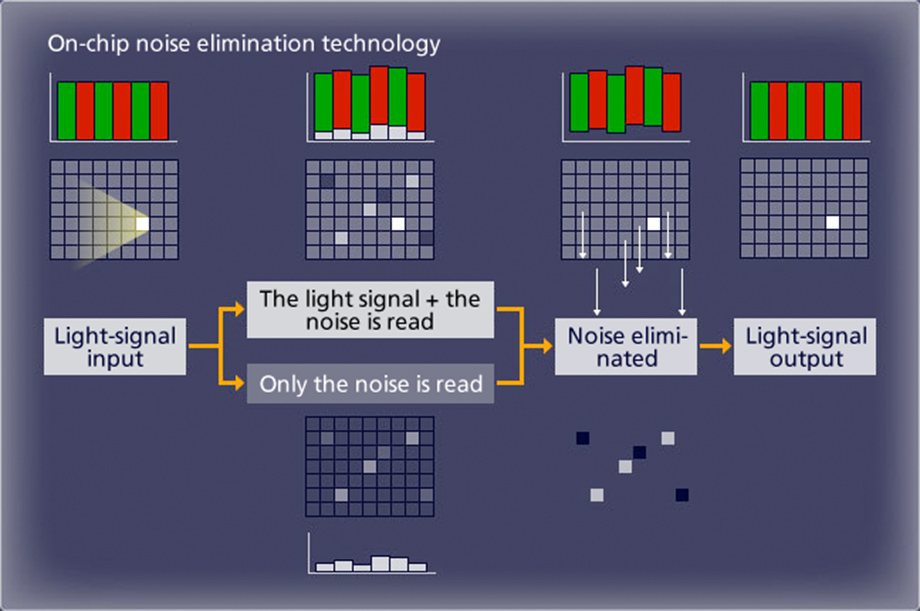
#Industrial equipment technologies#Imaging technologies#Electrical engineering#Computer science
Because it is possible to reduce random noise by completely resetting photodiodes (units that store a charge), Canon separated the charge-storage units and signal-readout units for its design. First, the noise charge remaining in the storage unit is transferred to the readout unit in order to completely reset the photodiode and retain/read the initial noise value. Next, the light charge and noise charge are read together and then the noise information is eliminated from this signal to reduce random noise and increase the S/N ratio of the sensor output.
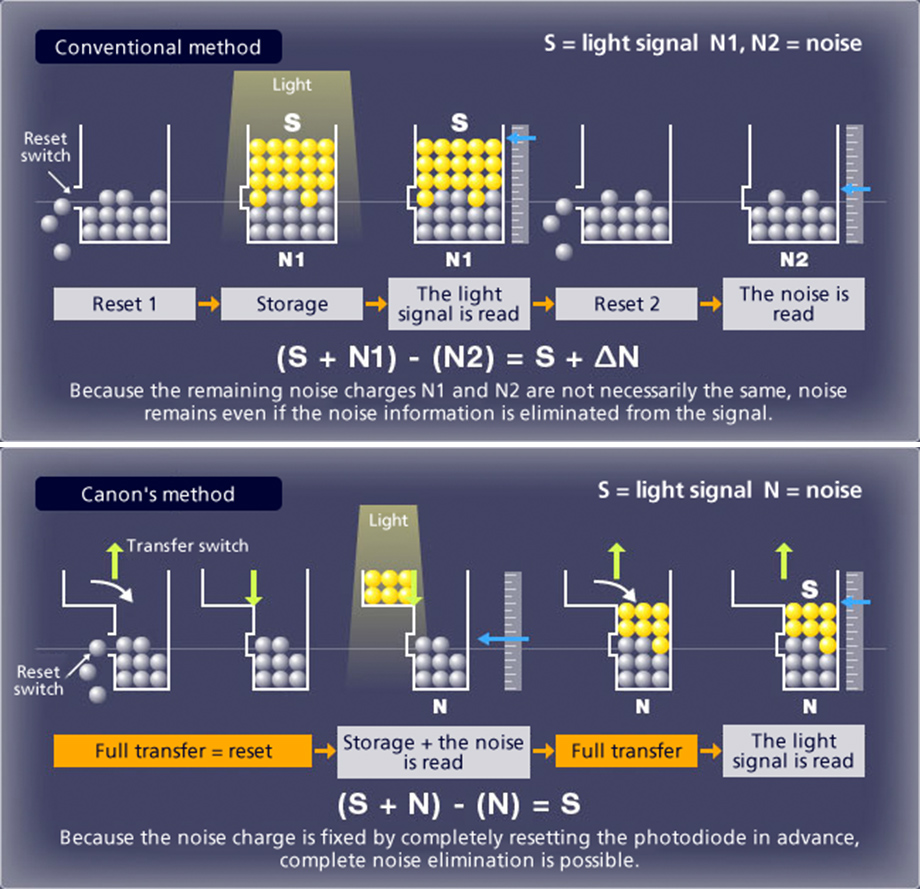
#Industrial equipment technologies#Imaging technologies#Physics
The ME20F-SH incorporates the image processing platform DIGIC DV4. Because the image processing platform performs such tasks as converting electrons received from the image sensor to video and images, correcting sensor information and performing noise processing, it plays an important role in determining image quality.
DIGIC DV4 can process a lot of data from the sensor at high speed, which makes it possible to reduce the underexposure of low-brightness areas and overexposure of high-brightness areas, both of which tend to occur during low-light shooting. More specifically, the camera makes it possible to secure a sufficiently high S/N ratio even when shooting scenes for which the brightest areas are more than 4,000 times as bright as the darkest ones. This results in clear videos and over twice the dynamic range of typical camcorders.

Example Result of Low-Light Shooting